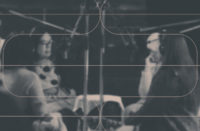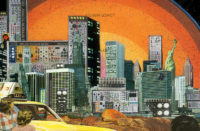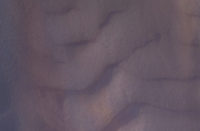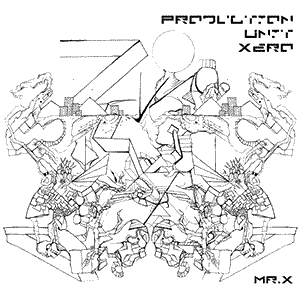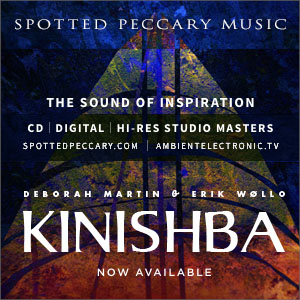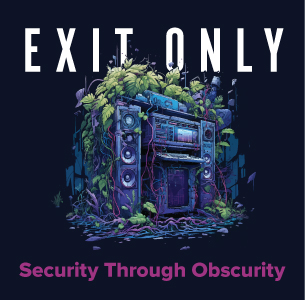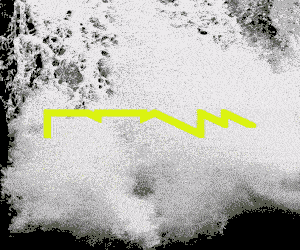- * No Charge :: All Bits Off
- * * Signs of Life :: Momentary Distraction
- * * * Viable Energy :: Source Solid
- * * * * Sustained Pulse Rate :: Rotation
- * * * * * Fully Charged :: Classic
::..:::…..:..::….:::::..:::..:::::::……:::…::.:::….::::..:..:::…::…….::::
- Loscil :: Stases
- MP3 :: One
- * * * * *
 :: A collection of drones, Stases is a drifting brume of sound. Less beat-touched than his recent work for Kranky, these tracks nonetheless are ephemera left over from those sessions (2001 to now), like ghosts of melodic ideas or phantoms of mood that never quite coalesced. Still, very much Loscil-style work and if you haven’t had a chance to drown yourself in Morgan’s moody and phantasmal soundscapes, Stasesis an easy way to start.”Biced” rolls back and forth like a slow wave building from a bell tone while elongated cellos drip wounded notes across this subtle ocean of sound. “Still Upon The Ocean Floor” reminds me of the aquatic requiems of Submers, Morgan’s record about submarines. Wave patterns pass like slow sonar echoes rippling across a deep-sea terrain. In this cold and dark world, nothing moves quickly. The fleeting melody is a haunted whisper floating within the rusty staterooms of a sunken ocean liner. “Subaquatic” drifts like an abandoned vessel; the gentle rotation of its untended propeller leaves cautious ripples in its wake. The lengthy “Micro Hydro” is expressed in bubbles of compressed air, rising up from the ocean floor. These bubbles expand, ringing with sound, as they pass up from the cold depths, through the thermocline, and into slumbering ocean currents. You have to be willing to suspend nearly all activity for drones — suspend yourself like you are floating at neutral buoyancy a few hundred feet down. Stases is no exception. I’ve been too busy, too frantic, lately and, sitting down and really listening to Stases has been very Zen. Diving deep with Morgan’s submerged ambience and focusing in on his infinite sustain, on the placid progression of his drones, has been a refreshing experience. I need to remember to do this more often.
:: A collection of drones, Stases is a drifting brume of sound. Less beat-touched than his recent work for Kranky, these tracks nonetheless are ephemera left over from those sessions (2001 to now), like ghosts of melodic ideas or phantoms of mood that never quite coalesced. Still, very much Loscil-style work and if you haven’t had a chance to drown yourself in Morgan’s moody and phantasmal soundscapes, Stasesis an easy way to start.”Biced” rolls back and forth like a slow wave building from a bell tone while elongated cellos drip wounded notes across this subtle ocean of sound. “Still Upon The Ocean Floor” reminds me of the aquatic requiems of Submers, Morgan’s record about submarines. Wave patterns pass like slow sonar echoes rippling across a deep-sea terrain. In this cold and dark world, nothing moves quickly. The fleeting melody is a haunted whisper floating within the rusty staterooms of a sunken ocean liner. “Subaquatic” drifts like an abandoned vessel; the gentle rotation of its untended propeller leaves cautious ripples in its wake. The lengthy “Micro Hydro” is expressed in bubbles of compressed air, rising up from the ocean floor. These bubbles expand, ringing with sound, as they pass up from the cold depths, through the thermocline, and into slumbering ocean currents. You have to be willing to suspend nearly all activity for drones — suspend yourself like you are floating at neutral buoyancy a few hundred feet down. Stases is no exception. I’ve been too busy, too frantic, lately and, sitting down and really listening to Stases has been very Zen. Diving deep with Morgan’s submerged ambience and focusing in on his infinite sustain, on the placid progression of his drones, has been a refreshing experience. I need to remember to do this more often.
::..:::…..:..::….:::::..:::..:::::::……:::…::.:::….::::..:..:::…::…….::::
- Cepia :: Pearl EP
- Purchase :: Ghostly
- * * * *
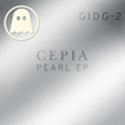 :: Ghostly International is entering the digital market with specially packaged EPs (exclusively available through iTunes for a few months before expanding to the other online retailers). A mix of new, alternative versions and remixed tracks, the EPs are meant to be entry points for new listeners. I got a chance to hear Cepia’s Pearl EP and found it to be an engaging slice of chattering IDM. Not nearly as funked out as his live set at Decibel, these five tracks still ruminate and perambulate with absorbing rhythms.”Malcesine” is an tone poem overture, am ambient choral of sustained notes that glides effortlessly through space. Its brevity is simply an introduction, an open arms welcome to the Cepia headspace. Sit down in the front, close your eyes, let us take control. “Our Bones” percolates with dapper beat programming while a mutant harpsichord mutters and coughs out a warped melody. “Salt Field” gutters with brushed percussion while a duet of organic synthesizer melodies twine together like love-addled serpents. The percussion dissolves into a susurration of micro-static and metallic winds. “Pearl” is a confluence of beats, a rushing maelstrom of taps and echoes that overtakes itself, spinning out of control. After reaching a chaotic zenith, the whirlpool drains away into an ambient wash. “As” punctuates the EP with a richer melodic expression. Oh, glitch beats and click-track programming still pervades the track, but these elements are undercurrents to the warm analog melodies un-spooling in the foreground. It’s a less complicated closer, much like “Malcesine” was a purified introduction — both are nice bookmarks to the more chaotic work in the center of the EP. Overall, the Pearl EP just aggravates my appetite — exactly what it is meant to, I suppose — leaving me wanting more. Nice.
:: Ghostly International is entering the digital market with specially packaged EPs (exclusively available through iTunes for a few months before expanding to the other online retailers). A mix of new, alternative versions and remixed tracks, the EPs are meant to be entry points for new listeners. I got a chance to hear Cepia’s Pearl EP and found it to be an engaging slice of chattering IDM. Not nearly as funked out as his live set at Decibel, these five tracks still ruminate and perambulate with absorbing rhythms.”Malcesine” is an tone poem overture, am ambient choral of sustained notes that glides effortlessly through space. Its brevity is simply an introduction, an open arms welcome to the Cepia headspace. Sit down in the front, close your eyes, let us take control. “Our Bones” percolates with dapper beat programming while a mutant harpsichord mutters and coughs out a warped melody. “Salt Field” gutters with brushed percussion while a duet of organic synthesizer melodies twine together like love-addled serpents. The percussion dissolves into a susurration of micro-static and metallic winds. “Pearl” is a confluence of beats, a rushing maelstrom of taps and echoes that overtakes itself, spinning out of control. After reaching a chaotic zenith, the whirlpool drains away into an ambient wash. “As” punctuates the EP with a richer melodic expression. Oh, glitch beats and click-track programming still pervades the track, but these elements are undercurrents to the warm analog melodies un-spooling in the foreground. It’s a less complicated closer, much like “Malcesine” was a purified introduction — both are nice bookmarks to the more chaotic work in the center of the EP. Overall, the Pearl EP just aggravates my appetite — exactly what it is meant to, I suppose — leaving me wanting more. Nice.
::..:::…..:..::….:::::..:::..:::::::……:::…::.:::….::::..:..:::…::…….::::
- Hollydrift :: Christmas EP
- MP3 :: Parasomnic Records
- * * * *
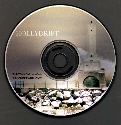 :: A Christmas present from Parasomnic Records (and, yes, I know it’s March — I’m just as behind this year as last), Hollydrift’s Christmas EP is a dense audio sculpture, three tracks of noise and groaning machinery and disembodied voices. Music for cold winters, definitely, for those days and nights when you’re trapped behind a wall of snow and the only civilization you can find on the radio dial is a scratchy voice telling you of a world to which you are no longer connected. (If you wander around Mathias Anderson’s site, you’ll find a section called “Listen”where you’ll find an assortment of these sorts of solitary transmissions.)Washes of guttural sound and lilting drones reminiscent of his earlier full-length release, Waiting For The Tiller, fill “Midvale Autocall,” a nearly ambient bridge from that record to this transitional EP. A collision between Stone Glass Steel, Wilt and the strangely ambient bits of Coil, Anderson’s work is an atmospheric smear of sound, an aural movement of wind and static and crackling radio noises. Born of solar radiation bombarding the ozone-rich stratosphere, Hollydrift’s swirling static burns across everything, washing away the child-like melodies of “Code Before Dawn,” the isolated voice of “Midvale Autocall” and the lonely drone of “Pioneer Trail.” I love Hollydrift because it sounds like living static, like an agonized and wounded roar of our burning atmosphere. It makes me think the sky is on fire, reminding me of how small we are beneath such a vibrant dome.
:: A Christmas present from Parasomnic Records (and, yes, I know it’s March — I’m just as behind this year as last), Hollydrift’s Christmas EP is a dense audio sculpture, three tracks of noise and groaning machinery and disembodied voices. Music for cold winters, definitely, for those days and nights when you’re trapped behind a wall of snow and the only civilization you can find on the radio dial is a scratchy voice telling you of a world to which you are no longer connected. (If you wander around Mathias Anderson’s site, you’ll find a section called “Listen”where you’ll find an assortment of these sorts of solitary transmissions.)Washes of guttural sound and lilting drones reminiscent of his earlier full-length release, Waiting For The Tiller, fill “Midvale Autocall,” a nearly ambient bridge from that record to this transitional EP. A collision between Stone Glass Steel, Wilt and the strangely ambient bits of Coil, Anderson’s work is an atmospheric smear of sound, an aural movement of wind and static and crackling radio noises. Born of solar radiation bombarding the ozone-rich stratosphere, Hollydrift’s swirling static burns across everything, washing away the child-like melodies of “Code Before Dawn,” the isolated voice of “Midvale Autocall” and the lonely drone of “Pioneer Trail.” I love Hollydrift because it sounds like living static, like an agonized and wounded roar of our burning atmosphere. It makes me think the sky is on fire, reminding me of how small we are beneath such a vibrant dome.
::..:::…..:..::….:::::..:::..:::::::……:::…::.:::….::::..:..:::…::…….::::
- Wavespan :: Wavespan
- MP3 :: Monotonik
- * * * * *
 :: Wavespan sneak a fantastic record under the radar here with their self-titled release. I’ve been cycling it pretty constantly all weekend, letting it bend my mind away from all the numbing mundane things I should be doing. Orb-like ambience, undulating dub echoes, silky analog melodies as spun off the FAX label, and quirky choices for voice samples keep the listener involved. Just as the ambience drops you into weightless space, Phil Garrison and Alex Lumb (the duo behind Wavepsan) tap you with something that wakes your mind up, something that keeps you grounded.While “Concentration Dub” and “On the Nature of Consciousness” expand the spaces between synapses with their sonorous echoes, “Single Bullet Theory” reconsiders the JFK assassination over a chunky downtempo beat (like something from a The Grassy Knoll record). “Origin of the Species” evolves from whistling space music to bass-heavy spectral funk, a tintinnabulation soundtrack for generative organisms rushing towards evolutionary ascension. “Threshold” dives into watery ambience, a headspace filled with churning bubbles and bell tones that becomes electrically charged — surging with furious waves of guitar noise. It’s not “ambient” in the strictest sense, but for a guy who just proclaimed his love for Hollydrift’s caustic collage work, this wave of noise — which you can hear coming and going — is still an atmosphere in which one can get lost. That’s really what I like about this record: the ability to get lost in it. Like some of the classic FAX records, Wavespan crosses some of the traditional genre markers. While it cleaves to the boundaries of ambient, electro and analog experimentalism, it changes from start to finish — charting a course across the musical landscape. You step into it where you may and find something different each time. Fabulous stuff.
:: Wavespan sneak a fantastic record under the radar here with their self-titled release. I’ve been cycling it pretty constantly all weekend, letting it bend my mind away from all the numbing mundane things I should be doing. Orb-like ambience, undulating dub echoes, silky analog melodies as spun off the FAX label, and quirky choices for voice samples keep the listener involved. Just as the ambience drops you into weightless space, Phil Garrison and Alex Lumb (the duo behind Wavepsan) tap you with something that wakes your mind up, something that keeps you grounded.While “Concentration Dub” and “On the Nature of Consciousness” expand the spaces between synapses with their sonorous echoes, “Single Bullet Theory” reconsiders the JFK assassination over a chunky downtempo beat (like something from a The Grassy Knoll record). “Origin of the Species” evolves from whistling space music to bass-heavy spectral funk, a tintinnabulation soundtrack for generative organisms rushing towards evolutionary ascension. “Threshold” dives into watery ambience, a headspace filled with churning bubbles and bell tones that becomes electrically charged — surging with furious waves of guitar noise. It’s not “ambient” in the strictest sense, but for a guy who just proclaimed his love for Hollydrift’s caustic collage work, this wave of noise — which you can hear coming and going — is still an atmosphere in which one can get lost. That’s really what I like about this record: the ability to get lost in it. Like some of the classic FAX records, Wavespan crosses some of the traditional genre markers. While it cleaves to the boundaries of ambient, electro and analog experimentalism, it changes from start to finish — charting a course across the musical landscape. You step into it where you may and find something different each time. Fabulous stuff.
::..:::…..:..::….:::::..:::..:::::::……:::…::.:::….::::..:..:::…::…….::::
- D Liner :: Black Summer
- MP3 :: Oscilator
- * * *
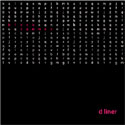 :: Andrej Imamovic offers us a three track techno EP with Black Summer, the first release in 2006 from Sarajevo-based Oscilator. Weeping synths, clattering drums, and reverbating vocal samples set the pace for “Black Summer, Pt. 1.” “Black Summer, Pt. 2” winds into Paul Oakenfold territory, a burgeoning stadium stomper that hangs on the cusp of exploding, vibrating with an resonant urgency. “Stockholm Syndrome,” a final bottom-heavy variation, begins to shed the textured layers of the previous two tracks, dissolving into a dissonant bubble of beats and analog synth gurgles. Run all together, it’s a 17-minute techno workup — raising the crowd up, holding them high, and bringing them down. Made for the clubs where the crowds dance all night, greeting the limpid dawn as they stagger to the next club, “Black Summer” still bouncing in their ears.
:: Andrej Imamovic offers us a three track techno EP with Black Summer, the first release in 2006 from Sarajevo-based Oscilator. Weeping synths, clattering drums, and reverbating vocal samples set the pace for “Black Summer, Pt. 1.” “Black Summer, Pt. 2” winds into Paul Oakenfold territory, a burgeoning stadium stomper that hangs on the cusp of exploding, vibrating with an resonant urgency. “Stockholm Syndrome,” a final bottom-heavy variation, begins to shed the textured layers of the previous two tracks, dissolving into a dissonant bubble of beats and analog synth gurgles. Run all together, it’s a 17-minute techno workup — raising the crowd up, holding them high, and bringing them down. Made for the clubs where the crowds dance all night, greeting the limpid dawn as they stagger to the next club, “Black Summer” still bouncing in their ears.
::..:::…..:..::….:::::..:::..:::::::……:::…::.:::….::::..:..:::…::…….::::
- Alta Infidelidad :: Cactus Y Volcanes
- MP3 :: Thinner
- * * * * *
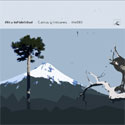 :: Alta Infidelidad’s Cactus Y Volcanesis a collaboration between two of Chile’s emerging minimalists — Christian Dittmann and Jorge Cortés (operating under the nom de plume of Receptor). The tracks are fragile constructions, held together by a whisper of melody, a percolating foundation of rhythm, a guttering gasp of percussion. While Receptor is noted as being the minimalist of the pair and Dittmann more of the versatile percussionist, the mix of their styles is a volatile arrangement of these fragmentary elements and a floor-friendly techno pulse.”Oeste,” reminiscent of Richardo Villalobos’ recent Achso for Cadenza, builds from a field recording of gulls riding over coastal waves and transforms into a masterful concoction of trickling melody and micro-percussion. The underlying beat of “Cancíon De Cuna” is a Thomas Brinkmann-esque vinyl groove while a melody seemingly constructed from church bells and Volkswagen horns shoves its way through a haze of downtown Santiago ambience. It’s the rhythmic pulse of a city as heard from the back seat of a cab, the sparse melody whistling from the cabbie’s lips as he navigates through the echo-filled streets (while Receptor’s remix strips away most of the textured grit of the track to lay bare the thumping heart of the song). A railway rhythm propels “Gran Unión” while dopplered voices, whispers of vacuum seals, gurgling water pipes and crackling radio static provide texture and syncopation to the mix. “Rápido” hisses with Pole-esque studio distortion and dub echo; the track builds its rhythm out of the reverberating echo, providing two beats and catching the others in a diastolic back-beat. Dittmann provides a remix of “Rápido” that dives into the space between the echoing beats of the original. Finding more single-celled life in the interim areas, Dittmann’s remix is an aquatic, subterranean dub experience. Yet, even in this microscopic space, Ditmann finds enough particles to coalesce a finger-tapping rhythm. While there are certainly regions where styles of music originate, these styles don’t remain localized long. Demonstrating that Santiago, Chile, is just as vibrantly curious and exploratory as Berlin, Germany, the duo of Dittmann and Cortés throw down a fantastic minimalist record. While an MP3 doesn’t have the same weight in your hand as a piece of vinyl, it is so much easier to stick in your pocket and take with you. A pulsating soundtrack readymade for your portable life, Alta Infidelidad’s Cactus Y Volcanes is easily the year’s first must-have download.
:: Alta Infidelidad’s Cactus Y Volcanesis a collaboration between two of Chile’s emerging minimalists — Christian Dittmann and Jorge Cortés (operating under the nom de plume of Receptor). The tracks are fragile constructions, held together by a whisper of melody, a percolating foundation of rhythm, a guttering gasp of percussion. While Receptor is noted as being the minimalist of the pair and Dittmann more of the versatile percussionist, the mix of their styles is a volatile arrangement of these fragmentary elements and a floor-friendly techno pulse.”Oeste,” reminiscent of Richardo Villalobos’ recent Achso for Cadenza, builds from a field recording of gulls riding over coastal waves and transforms into a masterful concoction of trickling melody and micro-percussion. The underlying beat of “Cancíon De Cuna” is a Thomas Brinkmann-esque vinyl groove while a melody seemingly constructed from church bells and Volkswagen horns shoves its way through a haze of downtown Santiago ambience. It’s the rhythmic pulse of a city as heard from the back seat of a cab, the sparse melody whistling from the cabbie’s lips as he navigates through the echo-filled streets (while Receptor’s remix strips away most of the textured grit of the track to lay bare the thumping heart of the song). A railway rhythm propels “Gran Unión” while dopplered voices, whispers of vacuum seals, gurgling water pipes and crackling radio static provide texture and syncopation to the mix. “Rápido” hisses with Pole-esque studio distortion and dub echo; the track builds its rhythm out of the reverberating echo, providing two beats and catching the others in a diastolic back-beat. Dittmann provides a remix of “Rápido” that dives into the space between the echoing beats of the original. Finding more single-celled life in the interim areas, Dittmann’s remix is an aquatic, subterranean dub experience. Yet, even in this microscopic space, Ditmann finds enough particles to coalesce a finger-tapping rhythm. While there are certainly regions where styles of music originate, these styles don’t remain localized long. Demonstrating that Santiago, Chile, is just as vibrantly curious and exploratory as Berlin, Germany, the duo of Dittmann and Cortés throw down a fantastic minimalist record. While an MP3 doesn’t have the same weight in your hand as a piece of vinyl, it is so much easier to stick in your pocket and take with you. A pulsating soundtrack readymade for your portable life, Alta Infidelidad’s Cactus Y Volcanes is easily the year’s first must-have download.
::..:::…..:..::….:::::..:::..:::::::……:::…::.:::….::::..:..:::…::…….::::
- Navarro :: EKO Std.
- MP3 :: Standard Klik Music
- * * * *
 :: Founder of the EKO netlabel, Alexandre Navarro offers a delicious ambient journey via Standard Klik Music, complete with a video version of “State.” Drifting soundscapes built of gorgeous tones and phantasmal melodies, EKO Std.is pastoral poetry. “AM,” using piano, a gentle breeze of static and a diaphanous synthesizer melody, dissolves into nothingness like a damp fog dispersed by the morning sun. “Land,” caught like motes of dust in the bright light of an early spring sun, is filled with holes — air getting beneath the notes and the light percussion. Wind and a marimba duet in “State,” the wind bumping into the microphone like a clumsy dance partner while the marimba sounds such simple notes that it seems almost transparent. “Park,” naturally enough, encompasses field recordings from such a place and the distant cry of children’s voices and bird song make the flute-like melodies seem redolent of the new growth of spring.The video for “State” is filled with twinkling lights, a version different that what springs to mind when I hear the song. But this just demonstrates the individual nature of ambient music (well, most instrumental-based music for that matter): each listener finds a different element on which to focus. Squinting at my screen, I can see how the lights correspond to the melodies of the song, but I can’t stop hearing the wind and the popping detritus of static interference. My own predilections, I suppose. Still, it’s an engrossing vision built by the artist around his own music and effectively captures the delicate airness of his work. EKO Std. is the ambient sound of life, a little sonic reminder we can keep with us during the bleak winter months.
:: Founder of the EKO netlabel, Alexandre Navarro offers a delicious ambient journey via Standard Klik Music, complete with a video version of “State.” Drifting soundscapes built of gorgeous tones and phantasmal melodies, EKO Std.is pastoral poetry. “AM,” using piano, a gentle breeze of static and a diaphanous synthesizer melody, dissolves into nothingness like a damp fog dispersed by the morning sun. “Land,” caught like motes of dust in the bright light of an early spring sun, is filled with holes — air getting beneath the notes and the light percussion. Wind and a marimba duet in “State,” the wind bumping into the microphone like a clumsy dance partner while the marimba sounds such simple notes that it seems almost transparent. “Park,” naturally enough, encompasses field recordings from such a place and the distant cry of children’s voices and bird song make the flute-like melodies seem redolent of the new growth of spring.The video for “State” is filled with twinkling lights, a version different that what springs to mind when I hear the song. But this just demonstrates the individual nature of ambient music (well, most instrumental-based music for that matter): each listener finds a different element on which to focus. Squinting at my screen, I can see how the lights correspond to the melodies of the song, but I can’t stop hearing the wind and the popping detritus of static interference. My own predilections, I suppose. Still, it’s an engrossing vision built by the artist around his own music and effectively captures the delicate airness of his work. EKO Std. is the ambient sound of life, a little sonic reminder we can keep with us during the bleak winter months.
::..:::…..:..::….:::::..:::..:::::::……:::…::.:::….::::..:..:::…::…….::::
Essential Band Links ::
- Cepia
- Christian Dittmann
- Hollydrift
- Loscil
- Navarro
- Receptor (Jorge Cortés)
- Wavespan






